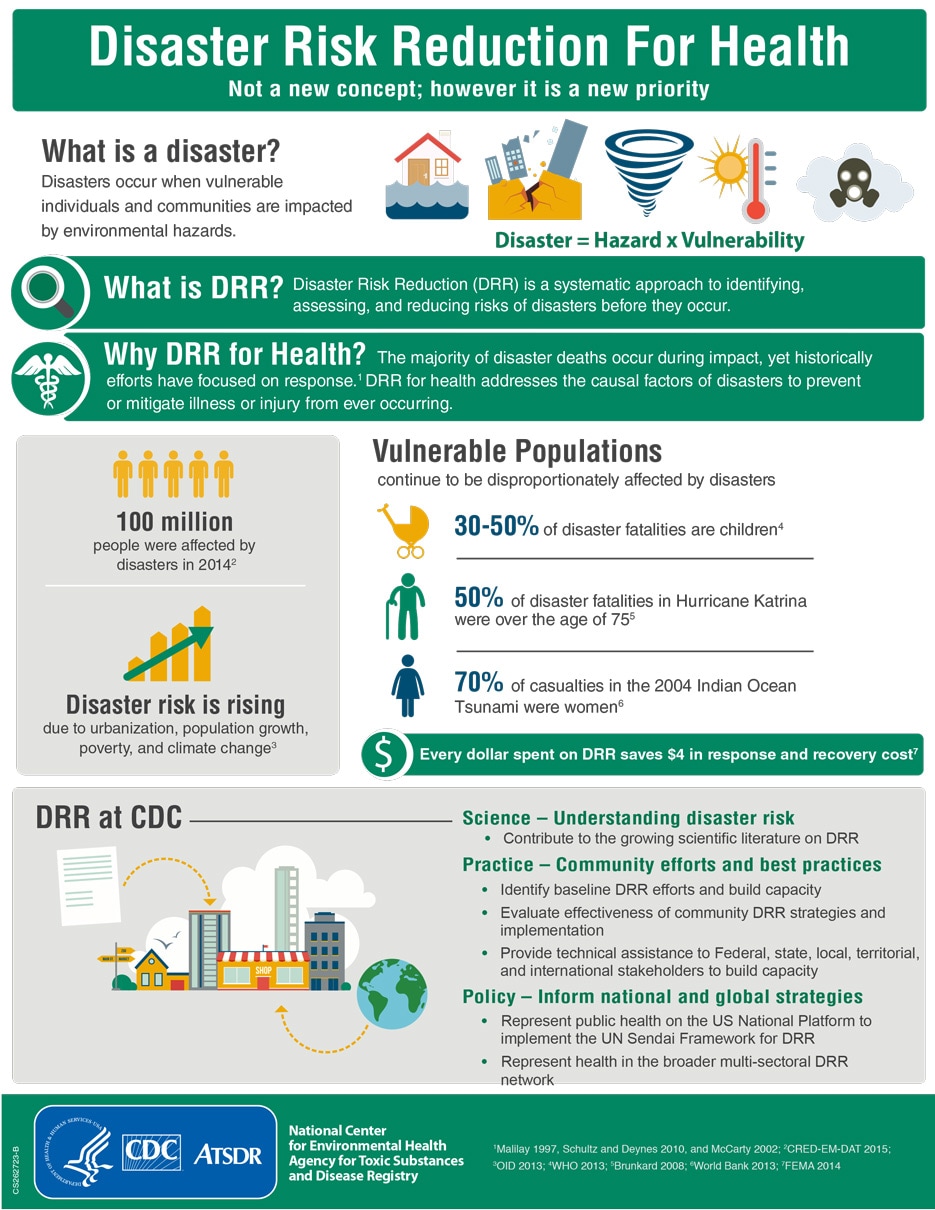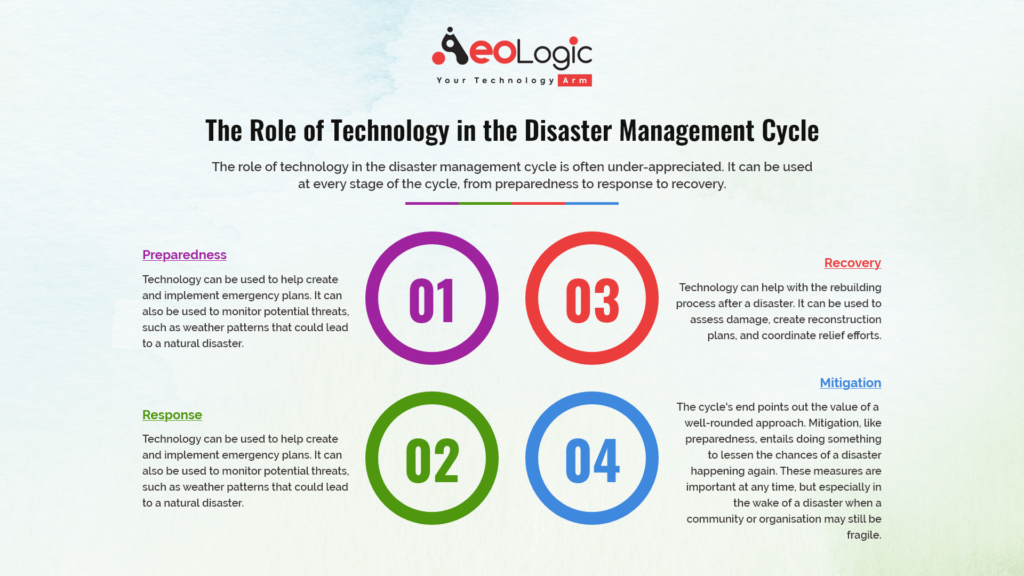The Role of Tech in Disaster Management and Response is crucial in ensuring effective and efficient disaster relief efforts. With advancements in technology, we now have powerful tools at our disposal that can help us mitigate the impact of disasters and save lives.
One significant aspect of tech in disaster management is the use of drones. These unmanned aerial vehicles can provide real-time aerial views of affected areas, allowing emergency responders to assess the extent of damage and plan their response accordingly. Additionally, drones can be equipped with cameras and sensors to gather valuable data, such as identifying survivors, assessing infrastructure damage, and monitoring environmental conditions. This integration of technology has proven to be a game-changer in disaster management, improving response times and enhancing situational awareness.


The Role of Tech in Disaster Management and Response
Disasters can strike at any moment, leaving communities devastated and in need of urgent assistance. In such situations, the role of technology in disaster management and response becomes critical. Technology has the power to enhance communication, coordination, and decision-making, enabling faster and more effective responses to emergencies. From early warning systems to data analytics, tech solutions are revolutionizing disaster management and helping save lives.
One significant aspect of tech’s role in disaster management and response is the use of advanced networks, such as 5G. The lightning-fast speed and low latency of 5G networks enable real-time communication and data transfer, which is crucial during emergencies. For example, emergency responders can use 5G-enabled devices to stream live video feeds from disaster sites, allowing them to assess the situation and allocate resources more effectively. Additionally, 5G networks can support the deployment of drones and robots for search and rescue missions, further improving response capabilities.
To unleash the true potential of 5G networks in disaster management and response, various use cases and opportunities need to be explored. For a more in-depth discussion on how 5G can revolutionize disaster management, you can visit this article that delves into the use cases and opportunities presented by 5G networks in the context of disaster management.
Early Warning Systems
Early warning systems play a crucial role in disaster management and response, providing timely information and alerts to at-risk communities. Technology has significantly improved the effectiveness and reach of early warning systems, enabling faster response times and potentially saving lives. One example is the use of sensors and connected devices in areas prone to natural disasters.
Sensors can detect changes in environmental conditions, such as rising water levels or seismic activity, and relay this information to a central monitoring system. Through the use of AI algorithms, this data can be analyzed in real-time to predict the likelihood and magnitude of a disaster. Once a threat is detected, automated alerts can be sent to residents in the affected areas, providing them with critical information and instructions on how to stay safe.
Furthermore, early warning systems can be integrated with mobile technology to reach a wider audience. Mobile apps and SMS alerts can be used to notify individuals about impending disasters and provide them with evacuation routes or emergency contact information. These tech-driven early warning systems enable proactive responses and help mitigate the impact of disasters.
Data Analytics for Disaster Response
Data analytics is another area where technology is making a significant impact on disaster management and response. The abundance of data available during emergencies, including sensor data, social media feeds, and satellite imagery, can be harnessed to gain valuable insights and improve decision-making.
Through advanced analytics and machine learning algorithms, patterns and trends can be identified, helping emergency responders to allocate resources efficiently. For example, data analysis can reveal areas with the highest concentration of affected individuals or the most significant damage, enabling targeted rescue and relief efforts. Real-time data analytics can also help monitor the progress of response operations and adjust strategies as needed.
Furthermore, data analytics can enhance post-disaster assessments, enabling authorities to identify areas that require immediate reconstruction or support. By analyzing data on infrastructure damage, population displacement, and resource availability, decision-makers can make informed choices and prioritize efforts to aid in recovery.
Artificial Intelligence in Disaster Management and Response
Artificial Intelligence (AI) is a game-changer when it comes to disaster management and response. AI algorithms can analyze vast amounts of data and detect patterns that may be beyond human capability. This can help in the early identification of disaster risks and the prediction of their impacts, allowing for proactive measures to be put in place.
AI-powered chatbots and virtual assistants are also being used to provide information and support to affected individuals during emergencies. These virtual assistants can answer frequently asked questions, provide real-time updates on relief efforts, and connect individuals to appropriate resources.
Furthermore, AI can be used to optimize resource allocation during disaster response. By analyzing historical data and considering various factors, such as population density, infrastructure, and available resources, AI can help emergency management teams make data-driven decisions on where to deploy personnel, supplies, and equipment.
Resilient Communication Networks
In times of disaster, when traditional communication infrastructure may be compromised, resilient communication networks become essential. These networks are designed to withstand the impact of disasters and ensure that essential communication channels remain operational.
One example of a resilient communication network is the use of satellite communication systems. Satellites can provide uninterrupted communication services even in remote or disaster-hit areas where terrestrial infrastructure may have been damaged. This enables emergency responders to maintain communication and coordination, facilitating quicker response times.
Another example is the use of mesh networks, which can be deployed in disaster-affected areas to create ad-hoc communication networks. Mesh networks consist of interconnected devices that can relay messages and data between each other, forming a decentralized communication infrastructure. This allows for reliable and resilient communication even in situations where traditional networks are unavailable.
Internet of Things (IoT) in Disaster Management
The Internet of Things (IoT) is playing a significant role in disaster management and response by connecting devices and sensors to collect and transmit data. IoT devices can monitor crucial infrastructure, such as dams, bridges, and buildings, for signs of damage or potential failure. This real-time data helps authorities make informed decisions about evacuation and resource allocation.
IoT technology also enables the collection of environmental data, such as temperature, humidity, and air quality, which can be used to assess the impact of disasters, such as wildfires or chemical spills. By leveraging IoT data, emergency responders can develop targeted strategies and deploy resources effectively.
Conclusion
The role of technology in disaster management and response cannot be understated. From early warning systems and data analytics to resilient communication networks and AI, tech solutions are transforming the way we prepare for and respond to emergencies. By harnessing the power of technology, we can save lives, protect communities, and build more resilient societies.
For a more detailed exploration of the use cases and opportunities presented by 5G networks in disaster management, check out this article.
The Role of Tech in Disaster Management and Response (Key Takeaways)
1. Technology plays a crucial role in disaster management by providing early warnings and alerts to communities.
2. Tech tools like GIS mapping help in assessing and visualizing the impact of disasters on affected areas.
3. Drones can be used for search and rescue operations in disaster-hit regions, accessing remote areas quickly.
4. Social media platforms serve as important communication channels during disasters, helping in mobilizing resources and sharing crucial information.
5. Artificial intelligence and machine learning enable data analysis and prediction of disaster patterns, aiding in proactive planning and response.

The role of technology in disaster management and response is crucial. Technology plays a vital role in predicting, monitoring, and mitigating the impact of disasters.
Through advanced weather forecasting systems, drones, and satellite imaging, we can monitor and track the development of natural disasters, allowing for more efficient evacuation plans and resource allocation. Additionally, technology enables rapid communication and coordination during a disaster, enabling faster response times and saving lives.
During and after a disaster, tech solutions like mobile apps and social media platforms serve as valuable tools for disseminating information, connecting affected communities, and providing assistance. With the help of technology, disaster management agencies can optimize their response efforts, ensuring a more effective and efficient disaster response, ultimately minimizing human suffering.


